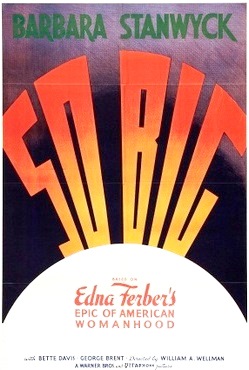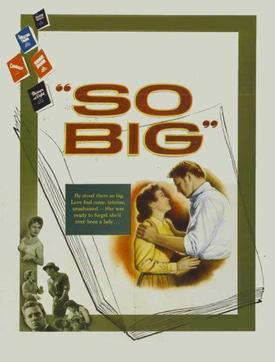
Catwoman is a character appearing in American comic books published by DC Comics. Created by Bill Finger and Bob Kane, she debuted as "the Cat" in Batman #1. She has become one of the superhero Batman's most prominent enemies, belonging to the collective of adversaries that make up his rogues gallery, as well as Batman's best known and most enduring love interest, with many stories depicting their complex love–hate relationship. Since 1993, Catwoman has had her own ongoing series, Catwoman.

The Death of the Heart is a 1938 novel by Elizabeth Bowen set in the interwar period. It is about a sixteen-year-old orphan, Portia Quayne, who moves to London to live with her half-brother Thomas and falls in love with Eddie, a friend of her sister-in-law.

Barbadian nationality law is regulated by 1966 Constitution of Barbados, as amended; the Barbados Citizenship Act, as amended; and various British Nationality laws. These laws determine who is, or is eligible to be, a national of Barbados. Barbadian nationality is typically obtained under the rules of jus sanguinis, i.e. by birth to a father or in some cases, a mother, with Barbadian nationality. It can also be granted to persons with an affiliation to the country, or to a permanent resident who has lived in the country for a given period of time through naturalisation. There is currently no program in Barbados for citizenship by investment, though they do have a special work visa program. Nationality establishes one's international identity as a member of a sovereign nation. Though it is not synonymous with citizenship, rights granted under domestic law for domestic purposes, the United Kingdom, and thus the Commonwealth, has traditionally used the words interchangeably.
Sarah Ann Gill was a social and religious leader in Barbados during the era of slavery. By an act of the Barbadian Parliament in 1998, she was named a National Hero of Barbados.

Paule Marshall was an American writer, best known for her 1959 debut novel Brown Girl, Brownstones. In 1992, at the age of 63, Marshall was awarded a MacArthur Fellowship grant.

Twilight is a 2005 young adult vampire-romance novel by author Stephenie Meyer. It is the first book in the Twilight series, and introduces seventeen-year-old Isabella "Bella" Swan, who moves from Phoenix, Arizona, to Forks, Washington. She is endangered after falling in love with Edward Cullen, a 103-year-old vampire frozen in his 17-year-old body. Additional novels in the series are New Moon, Eclipse, and Breaking Dawn.

So Big is a 1932 pre-Code American drama film directed by William A. Wellman and starring Barbara Stanwyck. The screenplay by J. Grubb Alexander and Robert Lord is based on the 1924 Pulitzer Prize-winning novel of the same name, by Edna Ferber.

Mia Amor Mottley, is a Barbadian politician and attorney who has served as the eighth prime minister of Barbados since 2018 and as Leader of the Barbados Labour Party (BLP) since 2008. Mottley is the first woman to hold either position. She is also Barbados' first prime minister under its republican system, following constitutional changes she introduced that abolished the country's constitutional monarchy.
Barbadian British people, Bajan Brits or British Barbadians, are citizens or residents of the United Kingdom whose ethnic origins lie fully or partially in the Caribbean island of Barbados. The UK is home to the second largest Barbadian-born migrant population out of all the OECD countries, with the 2001 Census recording 21,601 UK residents born on the Caribbean island, compared to the 53,785 Barbadian-born residents of the United States.

Alice Upside Down is a 2007 comedy-drama film, based on the Alice series written by Phyllis Reynolds Naylor. The film was shot at Bishop DuBourg High School in St. Louis, Missouri. Screened in limited cinema in 2007, it was released wide straight-to-DVD on July 29, 2008. In North America, it aired on Starz Kids & Family, but in the early years, it was on demand. The film centers on Alice, an 11-year-old girl starting the sixth grade at a new school. It starred Alyson Stoner, Lucas Grabeel, Bridgit Mendler, Luke Perry, Penny Marshall, and Ashley Eckstein.

The Polished Hoe is a novel by Barbadian writer Austin Clarke, published by Thomas Allen Publishers in 2002. It was the winner of the 2002 Scotiabank Giller Prize and the 2003 Commonwealth Writers' Prize for Canada and the Caribbean region and 2003 Trillium Book Award.

So Big is a 1953 American Drama Western film directed by Robert Wise and starring Jane Wyman, Sterling Hayden and Nancy Olson.
Harrison College is a co-educational grammar school in Bridgetown, Barbados. Founded in 1733, the school takes its name from Thomas Harrison, a Bridgetown merchant, who intended it to serve as "A Public and Free School for the poor and indigent boys of the parish".

Brooklyn has played a major role in various aspects of American culture including literature, cinema and theater as well as being home to the Brooklyn Academy of Music and to the second largest public art collection in the United States which is housed in the Brooklyn Museum.
An American immigrant novel is a genre of American novel which explores the process of assimilation and the relationship of American immigrants toward American identity and ideas. The novels often show and explore generational differences in immigrant families, especially the first and second generations. The extraordinary ethnic diversity of America allows for a type of immigrant novel which differs from other countries. America, often seen as a country of immigrants, opens up a unique canvas for expression and a better understanding of the American immigrant experience through literature. The narrative styles are diverse and can include memoirs, third-person, first-person, and biographies. The past twenty-five years alone have witnessed a major scholarly emphasis on multiculturalism in American studies, and a flood of new immigrant novels, reflecting the shifting demographics of United States immigration patterns.

Ophelia and the Marvelous Boy is a 2014 middle-grade fantasy novel by Australian author Karen Foxlee. The novel is a loose retelling of the 1844 Hans Christian Andersen story "The Snow Queen."
Monica Skeete was a Grenadian poet, writer and teacher. Her work was first published in the Barbadian literary magazine BIM in 1946. Her 1978 collection of short stories, Time Out, was published by Nelson Caribbean in their Authors of the Caribbean series, to support a growing educational market for Caribbean literature. Other short stories were anthologised in several publications. She also wrote novels. Much of her career was spent as a history teacher at Queen's College, Barbados. She died in 1997.












